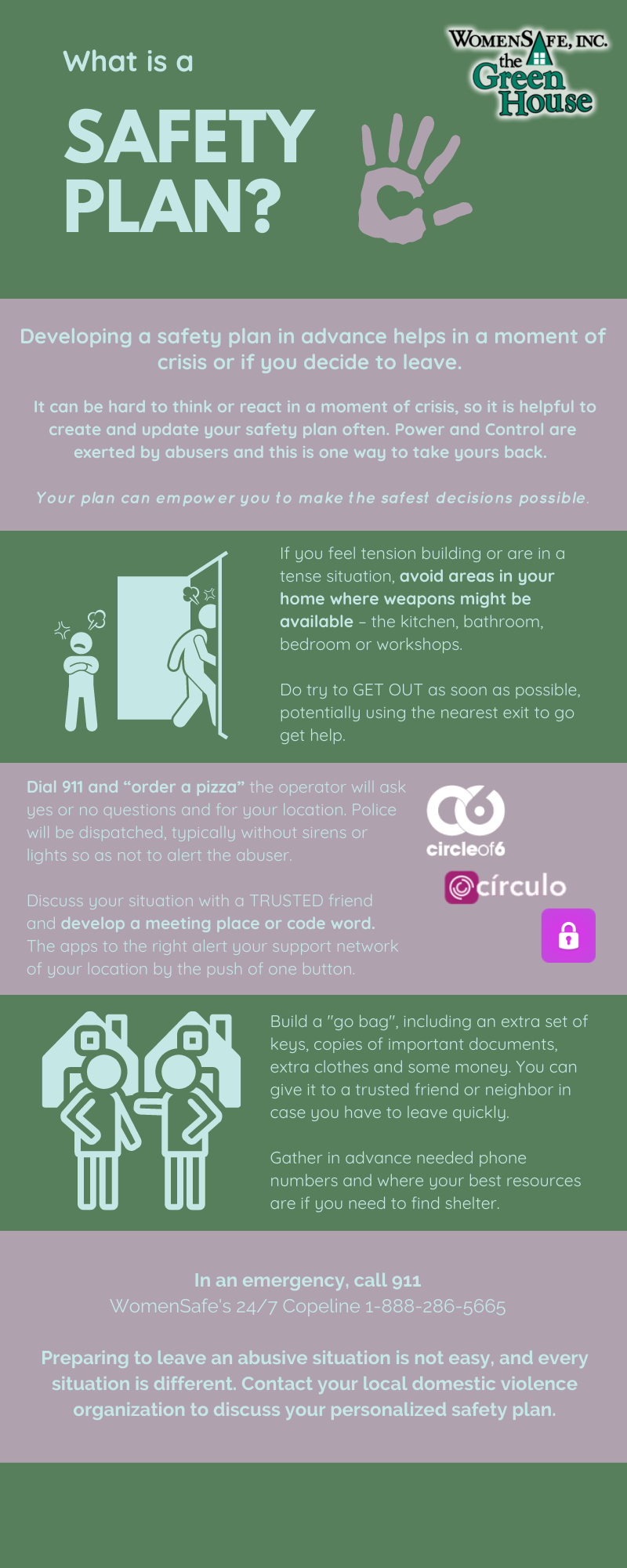
SAFETY PLANNING
Making a Safety Plan
Leaving is often the scariest and most dangerous time of an abusive relationship. It is important to develop a safety plan. Safety planning focuses on the immediate needs of the victim(s) and addresses the level or risk for danger.
Developing a Safety Plan Should Include:
Safety strategies and risk assessment during a violent incident
Safety strategies to consider when leaving
Safety strategies for daily living in a violent home
Safety strategies on the job and in public
Safety strategies for your mental health
Safety strategies if drugs or alcohol consumption is present
Safety strategies for the children
General Safety Plan Tips
Identify a variety of ways to get out of your home safely and practice your escape methods.
Pack a bag with medications, important documents, money, and keys and hide it.
Arrange a signal with neighbors to let them know when you need help.
Devise a code word to use with your children, grandchildren, friends, or others to indicate that you need the police.
Learn how to shut off GPS tracking devices in cell phones and vehicles.
Plan where you will go if you have to leave.
During an explosive incident, try to stay in a room with access to an exit (except the kitchen).
Try to stay in a room with a phone to call 911.
Inform law enforcement if weapons are in the home.
WomenSafe advocates are available to help you form safety planning strategies. A printable worksheet is also available.
To develop a personalized safety plan, call our 24-hour COPEline at 1-888-285-5665.
Items to Take With You
When you decide to leave an abusive partner, it is important to take certain items. These items might best be placed in a “Go Bag” so that if you leave in a hurry, you can grab them quickly. It may be best to keep these items at a trusted friend or neighbor’s house to keep it safe and accessible.
Remember, gathering as many of these items as you can is better then none at all.
Identification
Your birth certificate
Children’s birth certificates
Social Security Cards
School & vaccination records
Money
Checkbook, ATM card
Credit Cards
Keys-house/car/office
Driver’s license and registration
Medications
Welfare identification
Work permits
Green Card
Passport(s)
Divorce Papers
Medical records – for all family members
Lease/rental agreement, house deed, mortgage payment book
Bank books
Insurance papers
Clothes
Address book
Pictures
Jewelry
Children’s favorite toys and/or blankets
Items of special sentimental value


